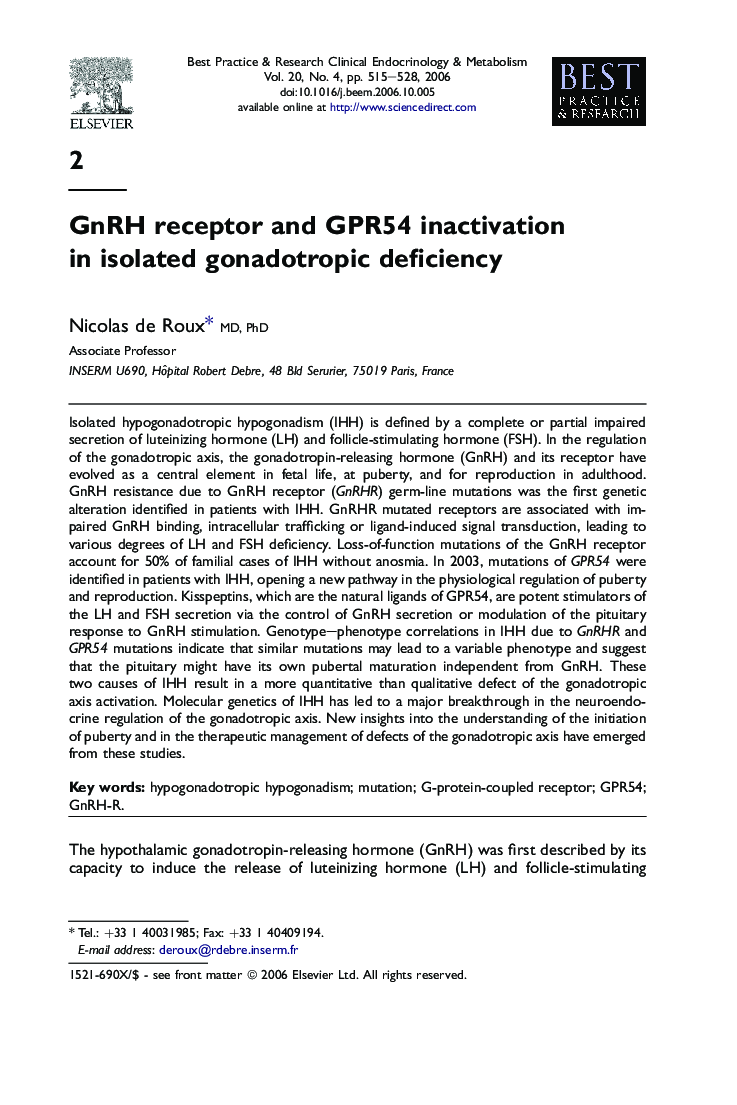| کد مقاله | کد نشریه | سال انتشار | مقاله انگلیسی | نسخه تمام متن |
|---|---|---|---|---|
| 2792263 | 1568662 | 2006 | 14 صفحه PDF | دانلود رایگان |

Isolated hypogonadotropic hypogonadism (IHH) is defined by a complete or partial impaired secretion of luteinizing hormone (LH) and follicle-stimulating hormone (FSH). In the regulation of the gonadotropic axis, the gonadotropin-releasing hormone (GnRH) and its receptor have evolved as a central element in fetal life, at puberty, and for reproduction in adulthood. GnRH resistance due to GnRH receptor (GnRHR) germ-line mutations was the first genetic alteration identified in patients with IHH. GnRHR mutated receptors are associated with impaired GnRH binding, intracellular trafficking or ligand-induced signal transduction, leading to various degrees of LH and FSH deficiency. Loss-of-function mutations of the GnRH receptor account for 50% of familial cases of IHH without anosmia. In 2003, mutations of GPR54 were identified in patients with IHH, opening a new pathway in the physiological regulation of puberty and reproduction. Kisspeptins, which are the natural ligands of GPR54, are potent stimulators of the LH and FSH secretion via the control of GnRH secretion or modulation of the pituitary response to GnRH stimulation. Genotype–phenotype correlations in IHH due to GnRHR and GPR54 mutations indicate that similar mutations may lead to a variable phenotype and suggest that the pituitary might have its own pubertal maturation independent from GnRH. These two causes of IHH result in a more quantitative than qualitative defect of the gonadotropic axis activation. Molecular genetics of IHH has led to a major breakthrough in the neuroendocrine regulation of the gonadotropic axis. New insights into the understanding of the initiation of puberty and in the therapeutic management of defects of the gonadotropic axis have emerged from these studies.
Journal: Best Practice & Research Clinical Endocrinology & Metabolism - Volume 20, Issue 4, December 2006, Pages 515–528